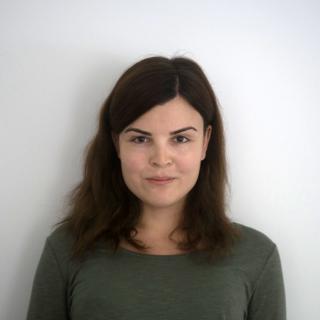Selene Flemming
I am a transgender second year GSBS student who uses she/her pronouns.
I love all things microscopy and have started development of Cryo-6D (xyztθλ), a cryogenic super resolution fluorescence microscope for correlated light and electron microscopy (CLEM). It will perform single molecule localization microscopy (SMLM) at 10E-7 torr and 80K and will be able to detect the azimuthal orientation (θ) of single fluorescent proteins via polarization modulation/demodulation and linear dichroism. Using a high numerical aperture reflective objective and off axis parabolic relay mirrors with astigmatic blazed grating point spread function (PSF) engineering, it is our hope to achieve under 20nm lateral (xy) and 50nm axial (z) localization precisions with 10nm spectral (λ) resolution and zero chromatic aberration.
To measure dynamic processes (t) such as conformational rearrangement in cryogenic samples with sub-microsecond fidelity, dynamic melting cryo-EM (dm-Cryo-EM) is being developed. A digital micromirror device (DMD) will be used to structure a pulsed infrared laser beam to simultaneously irradiate many diffraction limited volumes within the sample to induce microsecond devitrification with immediate revitrification. The all-reflective optical system will allow for unimpeded delivery of the infrared spectra which has the highest absorption in the aqueous sample. During this brief time in the liquid phase, dynamic processes can unfold with concurrent fluorescence measurements. In addition to encoding the PSF with axial and spectral information, a liquid crystal phase spatial light modulator will also adaptively compensate for aberration imparted by the reflective objective’s secondary mirror obscuration and non-planarity of cryo-EM samples. A dedicated tracking camera will be employed to compensate for thermal drift in three dimensions. The Cryo-6D microscope has been designed to image Autogrids on the Aquilos FIB shuttle, allowing for quick and contamination-free transfer between instruments in the in situ cryo-CLEM workflow.
I am conducting this research jointly in the Grigorieff Lab and Grunwald Lab.
My long-term goal as a researcher, subsequent to the completion of the GSBS program, is to create a unified system where a cryo-6D microscope, FIB emitter, and scanning transmission electron microscope (STEM) converge on a sample within a single vacuum chamber. This will allow for the preparation of even thinner lamellae as they will not be subjected to any external mechanical forces or water vapor deposition. I am also interested replacing the liquid nitrogen cooling system with a closed-loop liquid helium cryo-cooler to cool the sample to as low as 4K. I hypothesize this will increase the temporal resolution of dm-Cryo-EM at least ten-fold and will allow for even higher localization precision.




